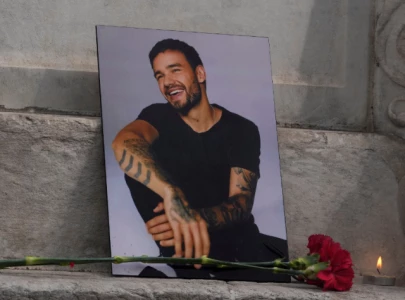Since terrorism relies on communication of a terrorist act to a public much bigger than the intended victims, the reporting of a violent event helps to extend its impact beyond those directly affected. In effect, without television, terrorism becomes rather like the philosopher’s hypothetical tree falling in the forest: no one hears it fall and, therefore, it has no reason for being. On the other hand, media outlets themselves benefit from larger audiences, increased sales, associated revenues and so forth from their coverage of terrorist threats and attacks. On September 11, 2001, for example, the intense public interest in unfolding events led the average American to view an incredible eight hours of television news coverage per day. On the same day, online news sites experienced unprecedented numbers of hits. CNN.com, for example, recorded 162 million views of its pages compared with a daily average of only 14 million. While the magnitude of these figures is considerable, they are by no means unique. Earlier events, such as Black September’s kidnapping of Israeli athletes at the 1972 Munich Olympics, for example — which drew a worldwide audience of half a billion or 13 per cent of the world’s population at the time — had already highlighted the importance of terrorism. This understanding of the media-terrorism nexus as a symbiotic relationship is intuitively appealing. Not only does it correspond to a sophisticated understanding of terrorism as a form of instrumental violence, it also poses a dilemma of press freedom as opposed to responsibility for the media elite. The debate rages on from scholars who exhort that terrorism increases with increasing media coverage, to those who view the media as being a victim of terrorism itself.
Media coverage directly does not cause terrorist violence, but it certainly helps to constitute terrorism as a social construction by the concept of news frames, which are interpretive structures that journalists employ to help their audiences locate an event within a broader context of historical, political, social and normative dynamics. They are collections of concepts, phrases, narratives and images that are instantly familiar to their viewers and readers. Crucially, because of this familiarity, they encourage very particular understandings of the events being depicted, giving them broader meaning. They do this, in large part, by magnifying or shrinking certain elements of an event to make those elements appear more or less relevant than others. This notion of news frames is a useful one for critical terrorism studies scholars because it encourages us to understand media presentations of terrorism as choices rather than neutral or objective representations of external events. How an attack is depicted by journalists and their editors always involves a process of selection. Certain causes, backgrounds, consequences and evaluations will be prioritised at the expense of others, and the foregrounding and camouflaging of particular parts of a story will have cognitive and evaluative effects on its audience.
Cognitively, a news frame works to produce a coherent narrative or story by shaping its empirical ‘facts’ into a reasonable explanation of what has occurred, and why. By joining actors and events around specific backdrops, frames encourage particular readings of violence, such as by asking their audiences to focus on the biography of a ‘terrorist’ leader or on religious tensions as the ongoing context of an attack. The evaluative dimension of a frame, in contrast, encourages audiences to assess and condemn a violent action by “naming perpetrators, identifying victims and attributing blame”. Simply by referring to an act of violence as ‘terrorism’, the media is already condemning that which has occurred.
(Extracted from and referenced from Professor Richard Jackson’s Critical Terrorism Studies project, this article is the first in a series of articles on critical terrorism studies and how they shape our understanding of terrorism).
Published in The Express Tribune, August 1st, 2013.
Like Opinion & Editorial on Facebook, follow @ETOpEd on Twitter to receive all updates on all our daily pieces.
COMMENTS (2)
Comments are moderated and generally will be posted if they are on-topic and not abusive.
For more information, please see our Comments FAQ

1731028448-0/Untitled-design-(37)1731028448-0-165x106.webp)











No one can deny that there is a responsibility on media outlets to report cats of violence and terror in an unbiased manner. In almost every act of terror, there are victims and their voice should be heard as well. It is a wrong notion that reporting the acts of violence endorses those acts and gives credence to the perpetrators of these acts. What really give credence to these terrorists are the conspiracy theorists who always like to steer the conversation away from the focus and create confusion. As communicators it becomes an obligation on everyone in this field to tell the story truthfully for the sake of the victims who suffer because of these acts. There are no studies that endorse the concept that by not ‘reporting the acts of violence and terror’ reduces these acts. I would think otherwise. By not highlighting and condemning an act of terror, we only encourage the terrorist to continue with their evil deed. Take the example of terrorism in the Afghanistan and Pakistan region. We have seen the narrative change, and the terrorists who were looked upon as the “religious worriers” are now being called “brutal killers,” who just want to kill and create chaos in the region to further their evil agenda. In Pakistan, we have seen that people have identified terrorism as the main threat to its existence. Media has played a very important role in this regard by highlighting the atrocities committed by the terrorists against innocent civilians.
Media has a responsibility to report these acts of terror without biases for the sake of the victims and the nations that suffers due to these terror attacks.
Abdul Quddus DET-United States Central Command www.centcom.mil/ur
thought-provoking!!